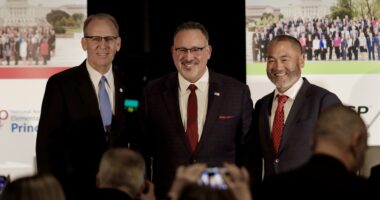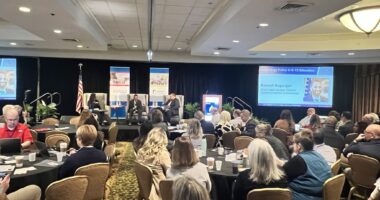5 Ways Principals Can Make Federal Relief Money Matter More for Their Students
Spending decisions will play out in communities for years to come. Principals can help make sure these financial decisions do the most for the children and families they serve.

This summer, school districts across the country are deciding how to spend the largest-ever one-time federal investment in public education. This follows a school year that brought a host of challenges that landed unevenly on schools, families, and children across the country. That means now more than ever principals should step in to help shape the ways that money is spent to ensure the strategies work for their students, families, and communities.
Here we map five ways principals can help make the most of the American Rescue Plan (ARP) monies. Principals can:
- Weigh in now as districts create plans for how to spend the federal funds. Districts decide how to spend the money (not the federal government). Most districts face late August deadlines to submit spending plans to their states. The federal money is highly flexible, which means districts have enormous latitude in how they choose to spend it. Districts must use 20 percent of their money to address the impacts of lost learning time, but even this comes with no real strings attached. Where principals have ideas about what will work to get their students to start the year strong and on track, they should share those now. Some principals have called for a portion of the funds to go directly to schools to decide how to spend, and districts have agreed. Some principals have proposed using funds to engage parents and students in new ways, pay stipends to staff who help students return, or try other innovations that can be done on a small scale. Principals, of course, don’t need to wait for their districts to propose any of these ideas; they can ask directly instead.
- Use data to get smart on what their students need. Principals need to speak up for their students, but that means being hyper clear on what the numbers say. How many and which students had attendance problems last year or failed classes? Which students have left and aren’t likely to return? Grade by grade, how are students doing academically? Since every school is part of the district, any money spent on one school comes at the expense of spending it at another school. With that in mind, principals can check their state’s school-by-school spending data to see if their school has been historically underfunded compared to peer schools in the district and advocate accordingly.
- Engage the school’s families and staff about what they see as strategies that will work this year. The feds specifically call on districts to tap the community when developing ARP spending plans. Principals tend to be highly trusted in their communities, and so are especially well-positioned to gather local input and share it with the district. What concerns do families and staff have? What do they believe will make the biggest difference for their students and which strategies just won’t work for them? Small group tutoring? An extended school year? Late summer weeklong learning camps? Fewer half days or late starts (parents tend to have a lot to say about schedules)? What new supports for mental health are likely to work best? Depending on what they hear, principals might need to move beyond business as usual and consider using funds in customized ways to meet the specific needs of their families. Principals can use this resource as a guide in leading conversations with their families, then use that feedback to press the district for solutions that will work for their kids.
- Understand spending tradeoffs and educate staff and families on them. Investing in one thing always comes at the expense of investing in something else. After weathering months of remote learning at home with their children in the pandemic, many parents have growing expectations for what schools will offer. But spending is about tradeoffs. Principals can help their families and staff understand that and set expectations. In other words, ARP money isn’t an endless gusher, nor is it a silver bullet. By developing data-driven, community-vetted cost-equivalent tradeoffs (like these $500 per-student options), principals can help the public and their staff understand the menu of options and use them to inform spending plans. A related caution on expectations: The federal money is one-time funding. So when it runs out, it’s gone. Leaders will want to be careful about choices that bring recurring costs, like hiring a slew of new staff, as odds are they’ll just lose those new hires to painful layoffs in a few years once the relief funds run out.
- Continue beyond this summer to help revise spending plans over time for greatest impact. Deciding ARP spending isn’t a “one-and-done” job. Neither is communication around the spending. Ideally, principals will create an ongoing feedback loop with their families. As the 2021-22 school year unfolds, with new interventions and investments, there will be opportunities to pivot on spending as needed. Where new programs are launched, are they achieving the stated goals? Are they making a difference for students? Principals are a critical two-way communication bridge with their families and the district. Principals can keep their families up to speed and provide a forum for their feedback—feedback that gets channeled to district leaders. And principals can report to district leaders how investments are playing out in classrooms—and advocate for spending shifts that will better serve their students.
Here’s the bottom line: Spending decisions made in the coming months will likely be playing out in communities for years to come, impacting the educational prospects of millions of students. The pandemic wreaked havoc on many children and communities, but principals can help make sure these financial decisions do the most for the children and families they serve.
Dr. Marguerite Roza is research professor at Georgetown University and director of the Edunomics Lab. She also leads the McCourt School of Public Policy’s Certificate in Education Finance.
Laura Anderson is Associate Director of the Edunomics Lab.




